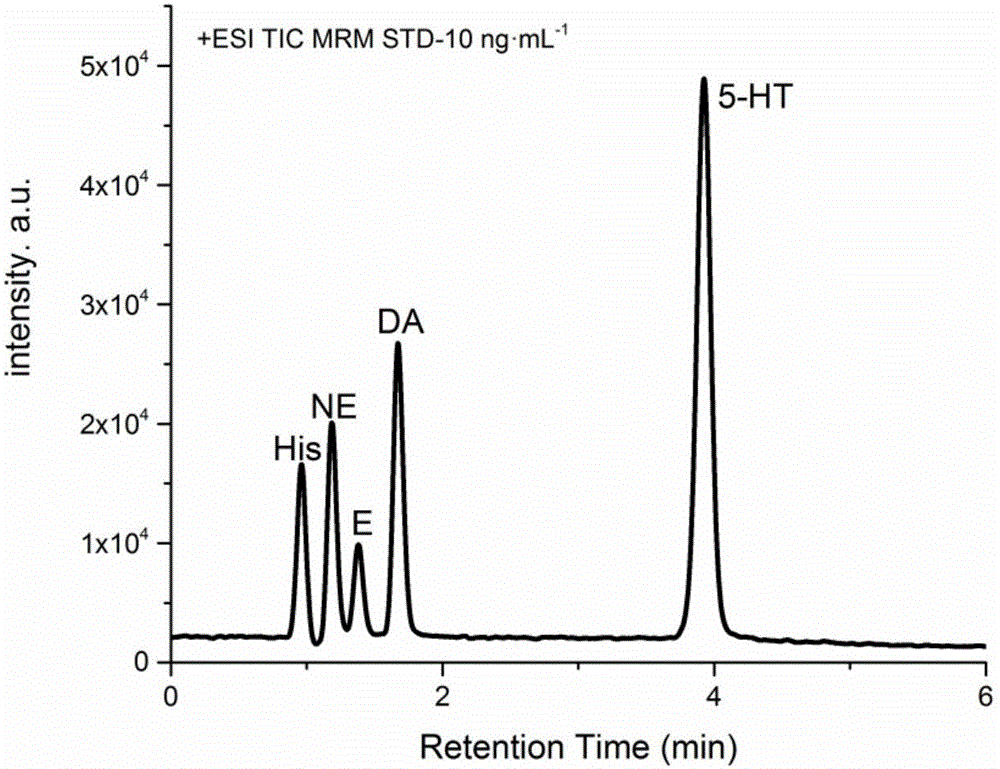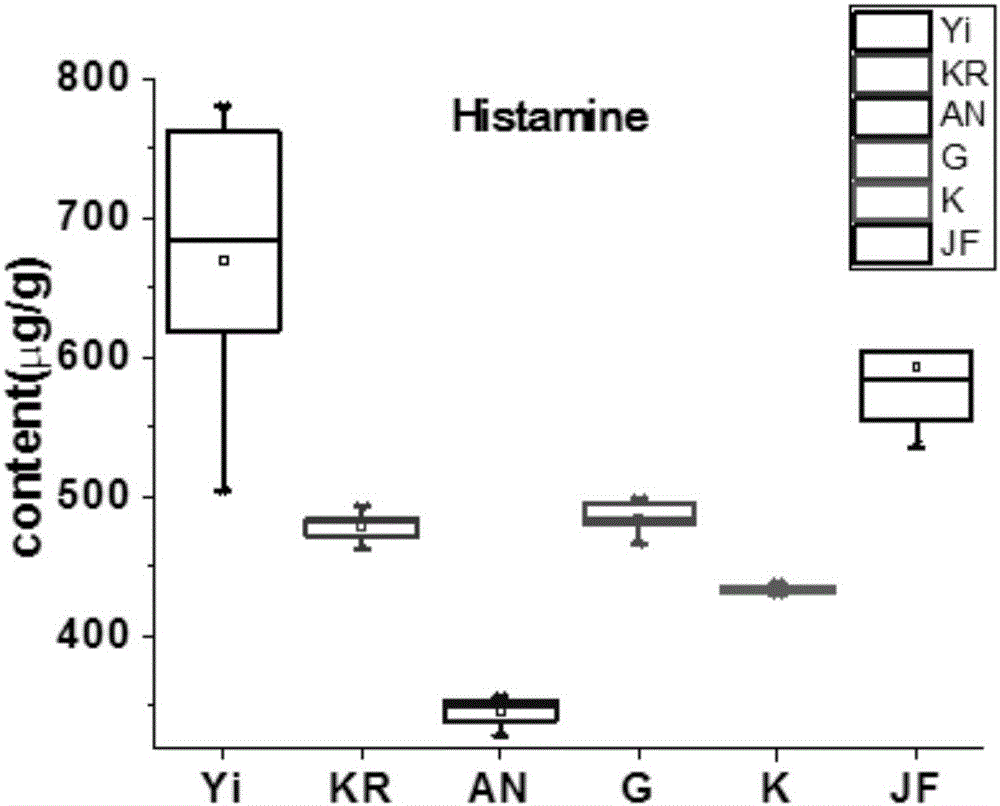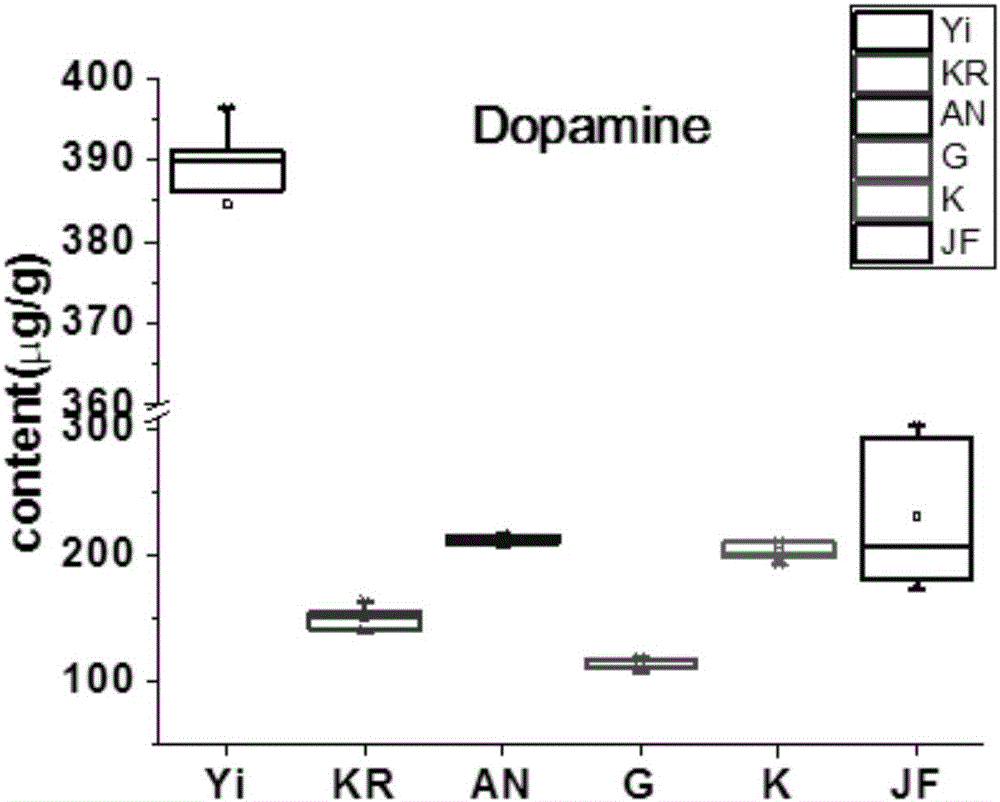Method for identifying types of bee venoms through biogenic amine as feature mark
A technology of biogenic amines and markers, applied in the field of bee analysis, can solve the problems of endangering the health of experimenters, cumbersome derivatization process, no bee venom classification, etc., and achieve accurate and reliable measurement results, environmental friendliness, and easy operation.
- Summary
- Abstract
- Description
- Claims
- Application Information
AI Technical Summary
Problems solved by technology
Method used
Image
Examples
Embodiment 1
[0060] (1) Preparation of standard stock solution: Accurately weigh 10.0mg of histamine, dopamine, serotonin, epinephrine, and norepinephrine respectively, place them in a 10mL volumetric flask, dissolve them in pure water and make to volume, and shake well to obtain 1.0mg / mL standard stock solution, sealed, stored at -4°C (stable for 6 months).
[0061] (2) Preparation of mixed standard working solutions: Take an appropriate amount of each standard stock solution in the same volumetric flask, dilute to volume with pure water, and prepare the following series of standard working solutions: 1ng / mL, 5ng / mL, 10ng / mL, 50ng / mL mL, 100ng / mL, 500ng / mL and 1000ng / mL, sealed, and stored in a 4°C refrigerator for later use (stable for 1 month).
[0062] (3) Pretreatment of bee venom samples: Weigh 5.0±0.1mg of bee venom samples, place them in a 5mL centrifuge tube with stopper, add 2mL of pure water, vortex for 10min to mix, centrifuge at 1000rpm and draw part of the supernatant from th...
PUM
 Login to View More
Login to View More Abstract
Description
Claims
Application Information
 Login to View More
Login to View More - R&D
- Intellectual Property
- Life Sciences
- Materials
- Tech Scout
- Unparalleled Data Quality
- Higher Quality Content
- 60% Fewer Hallucinations
Browse by: Latest US Patents, China's latest patents, Technical Efficacy Thesaurus, Application Domain, Technology Topic, Popular Technical Reports.
© 2025 PatSnap. All rights reserved.Legal|Privacy policy|Modern Slavery Act Transparency Statement|Sitemap|About US| Contact US: help@patsnap.com



